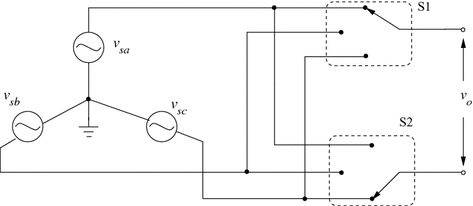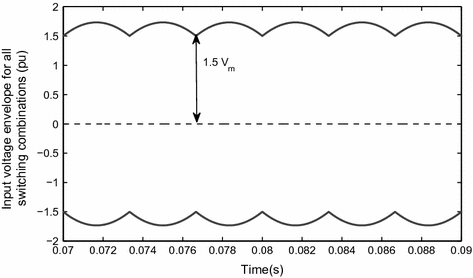Springer Nature Singapore Pte Ltd. 2017
Anindya Dasgupta and Parthasarathi Sensarma Design and Control of Matrix Converters Energy Systems in Electrical Engineering 10.1007/978-981-10-3831-0_1
1. Introduction
Matrix Converter (MC) is a class of switched mode power converters (SMPC) which contains only semiconductor devices in its power processing stage. These converters were conceived as an alternative to the Back to back inverter (B2BI) topology used in 3-phase to 3-phase power conversion. The necessity of finding an alternative to B2BI in the form of a more silicon reliant solution can be understand by analyzing its power stage. Figure a, shows the power conversion stage of B2BI.
Fig. 1.1
Power processing stage of 3 phase to 3 phase back to back inverters
The power stage of B2BI is made up of two inverters connected back to back through a capacitor which is also commonly referred to as the DC link capacitor. The inverter at the input side transforms the 3-phase sinusoidal AC voltage applied to its input terminals to a switched DC voltage which appears across the DC capacitor. The inverter at the output side requires a very stiff DC link voltage at its input terminals. Consequently a large electrolytic capacitor has to be used as the DC link capacitor. A significant portion of volume and weight of the converter is attributed to the DC link capacitor. Moreover, it has a higher failure rate than the semiconductors. Therefore, a 3-phase AC to AC converter whose power stage is realized only with semiconductor devices is likely to have a higher power density and lifetime than the B2BIs. This was the motivation behind finding a more semiconductor reliant mechanism for power conversion.
Topologically MC is similar to buck converter. Although the former is mostly associated with AC power and the latter strictly with DC, a look at the evolution of a buck converter helps to appreciate how MCs work. Figure shows the power stage of a buck converter where the single pole double throw switch Sw is periodically connected to the positive and negative terminals of the input DC voltage source

. This results in a pulsating voltage

at the output. The DC component of

can be obtained by averaging the pulse waveform over the switching period

as
Thus, by regulating the duty cycle d it is possible to synthesize a desirable DC component of the switched voltage

. The switching frequency (

) components and its harmonics which are also present in

can be subsequently attenuated to a large extent by using a LC filter. The important point to note here is that any desirable value of the DC component of the output voltage can be generated as long as this value is less than the source voltage

.
Fig. 1.2
Buck converter realized with a single pole double throw switch
Another useful aid in the analysis of 3-phase MC is the output voltage of a 3-phase AC to DC rectifier. Figure b. Let the input voltages be
Fig. 1.3
a 3-phase diode rectifier. b Output voltage
Replacing the 3 diodes connected to each of the output terminals by a fully controllable single pole-triple throw(SPTT) switch results in the converter shown in configuration Fig. , this restriction implies that the maximum amplitude of

is 0.866 times that of the input line-line voltage amplitude. Within this amplitude limit, a fundamental component of

having any amplitude, phase and frequency can be produced by appropriately regulating the SPTT switches.
Fig. 1.4
A 3-phase to 1-phase AC converter power stage
Fig. 1.5
Envelope of the input voltage waveform
The mode of operating a 3 to 1-phase AC converter can be extended to 3-phase to 3-phase AC conversion as well. Figure shows a 3-phase to 3-phase AC to AC converter structure made up of 3 SPTT switch. Since the 3-phase output voltages have to be synthesized directly from the 3 input phases all possible 3-phase output voltage envelopes must be completely encapsulated by the input voltage envelope. Consequently, the maximum achievable gain in voltage amplitude is 0.866. Apart from this fundamental limitation, there is no theoretical limitation on the possible set of output voltage waveforms. Therefore, the operational requirements are simplyrealization of the SPTT switches by using available semiconductor switches and devising an appropriate scheme for controlling them.
Each SPTT switch can be realized by 3 single pole-single throw (SPST) switch. By replacing the SPTT switch by 3 SPST switch with common poles connected to an output phase, the topology shown in Fig. is obtained. The 9 SPST appears to be arranged in a 3


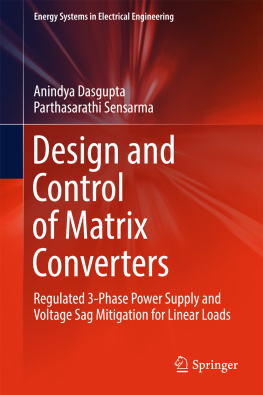
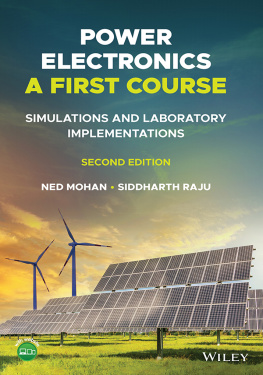

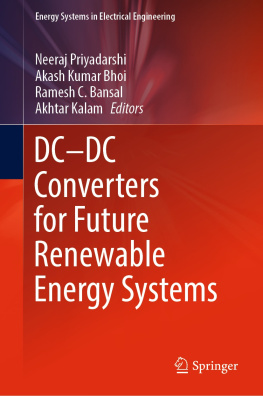
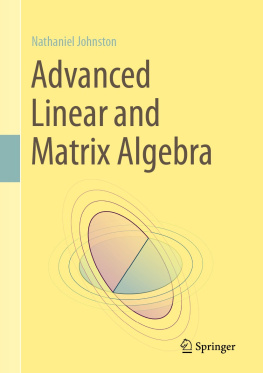
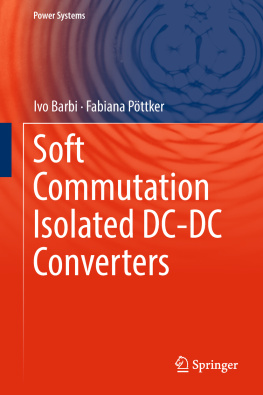
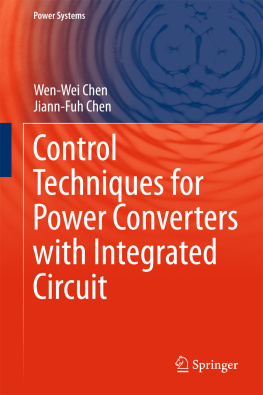
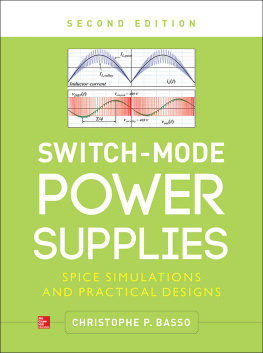
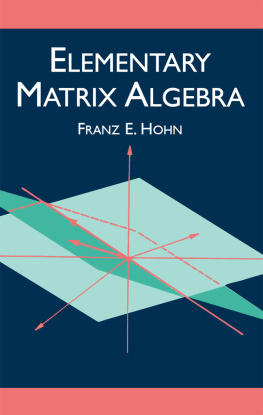

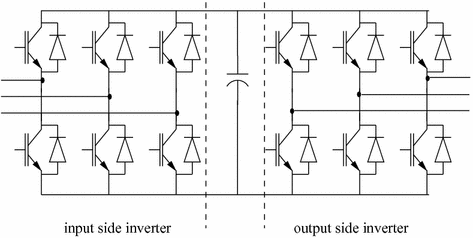
 . This results in a pulsating voltage
. This results in a pulsating voltage  at the output. The DC component of
at the output. The DC component of  can be obtained by averaging the pulse waveform over the switching period
can be obtained by averaging the pulse waveform over the switching period  as
as 
 . The switching frequency (
. The switching frequency (  ) components and its harmonics which are also present in
) components and its harmonics which are also present in  can be subsequently attenuated to a large extent by using a LC filter. The important point to note here is that any desirable value of the DC component of the output voltage can be generated as long as this value is less than the source voltage
can be subsequently attenuated to a large extent by using a LC filter. The important point to note here is that any desirable value of the DC component of the output voltage can be generated as long as this value is less than the source voltage  .
. 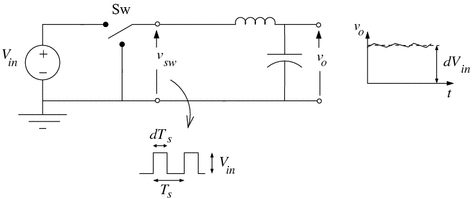


 is 0.866 times that of the input line-line voltage amplitude. Within this amplitude limit, a fundamental component of
is 0.866 times that of the input line-line voltage amplitude. Within this amplitude limit, a fundamental component of  having any amplitude, phase and frequency can be produced by appropriately regulating the SPTT switches.
having any amplitude, phase and frequency can be produced by appropriately regulating the SPTT switches. 